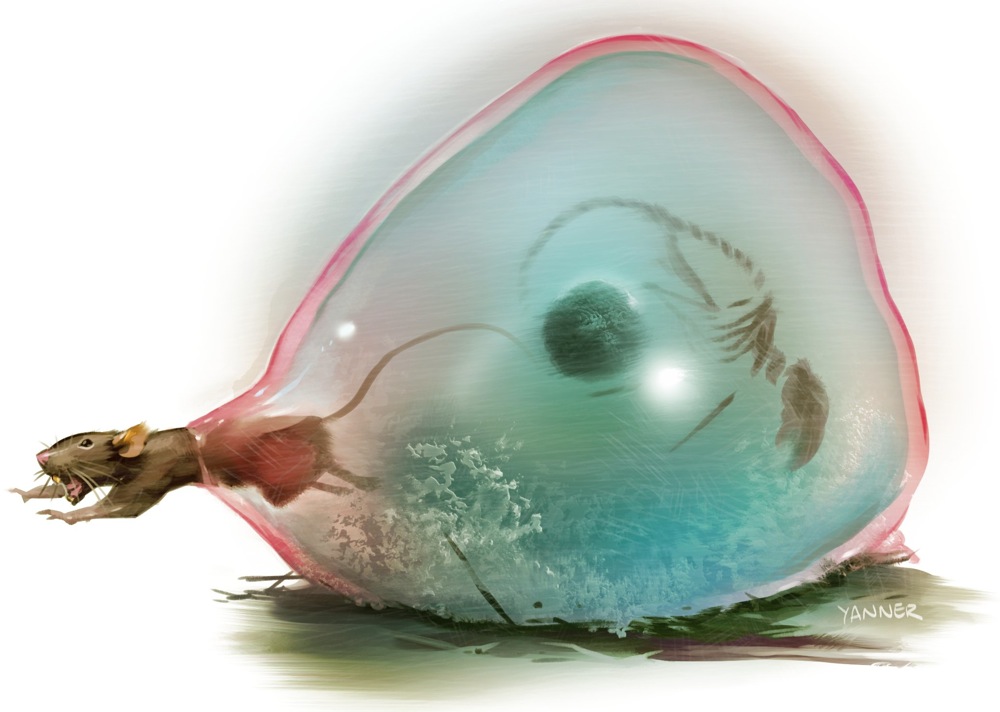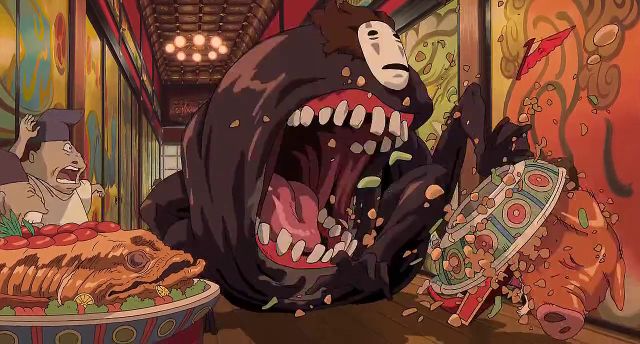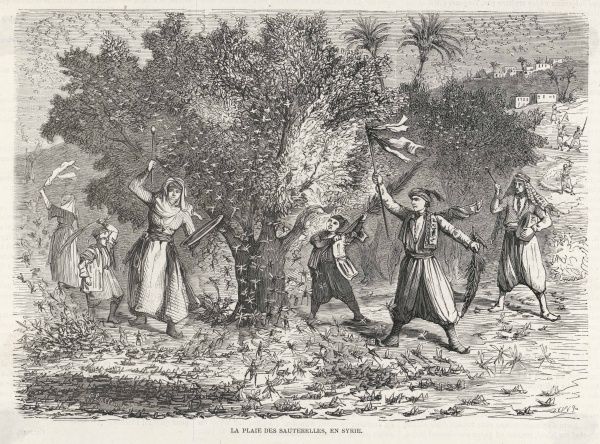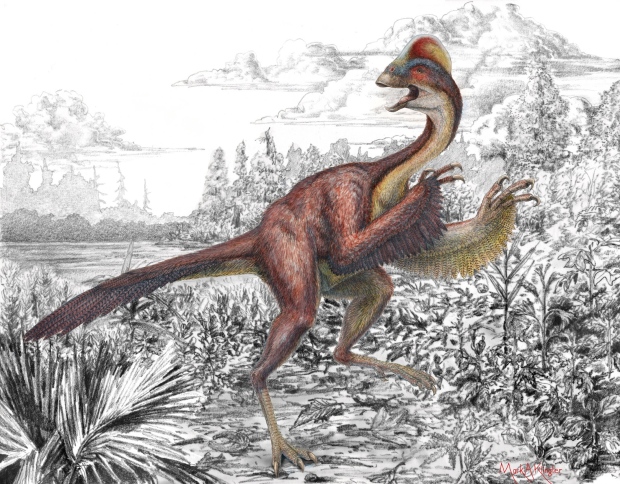The Seventh Day
Day seven oozes over the eastern horizon a whole lot faster than expected.

On the seventh day of searching / my party came upon: / seven rapid oozes / six vile ọgbanje, / five hungry things, / four burning swarms, / three hell birds, / two bloodmad zogs, / and a birchwrath in a fell wood.
The rapid ooze resembles a fluid filled membrane about two feet across. A rapidly pulsating nucleus is visible floating in its protoplasmic interior. The whole ooze vibrates continuously.
AD&D Version
Frequency: Rare
No. Appearing: 1-10
Armor Class: 6
Move: 12″
Hit Dice: 1+1
% in Lair: Nil
Treasure Type: Nil
No. of Attacks: 1
Damage/Attack: 1-4
Special Attacks: See below
Special Defenses: See below
Magic Resistance: See below
Intelligence: Animal
Alignment: Neutral
Size: S
Psionic Ability: Nil
Attack/Defense Modes: Nil
Level/XP Value: III/126 + 2/hp
Unlike many oozes, slimes, and puddings, the rapid ooze is neither slow nor dangerously acidic. The rapid ooze is an aggressive predator. It is semi-transparent, and its malleable form can squeeze into or through narrow spaces. Thus, the rapid ooze surprises prey on a 1-4. Thousands of stinging cells cover its outer membrane. Any creature touching this membrane takes 1-4 points of damage and must make a saving throw versus paralyzation (as if hit by the rapid ooze). The rapid ooze attacks with a whip-like pseudopod. A creature hit by the rapid ooze must save versus paralyzation or be anesthetized for 2-12 melee rounds. The rapid ooze then engulfs as much of its prey as it can. Its digestive enzymes inflict 1-4 points of damage each melee round.
The rapid ooze can be hit by all forms of weapons, but it takes only half damage from blunt weapons. Cold does not affect a rapid ooze unless it fails its saving throw, in which case it is slowed 50%. Electricity, fear, hold spells, paralyzation, polymorph, and sleep based attacks have no effect on the rapid ooze.
5E D&D Version
Small ooze, unaligned
Armor Class 14 (natural armor)
Hit Points 13 (3d6+3)
Speed 30 ft.
Ability Scores STR 8 (-1), DEX 15 (+2), CON 12 (+1), INT 3 (-4), WIS 12 (+1), CHA 6 (-2)
Skills Stealth +4
Damage Resistances cold; bludgeoning
Damage Immunities lightning
Condition Immunities blinded, charmed, deafened, frightened, paralyzed, prone
Senses blindsight 60 ft. (blind beyond this radius), passive Perception 11
Languages —
Challenge 1 (200 XP)
Amorphous. The rapid ooze can move through a space as narrow as 1 inch wide without squeezing.
Pack Tactics. The rapid ooze has advantage on an attack roll against a creature if at least one of the rapid ooze’s allies is within 5 feet of the creature and the ally isn’t incapacitated.
Stinging Cells. A creature that touches the rapid ooze or hits it with an unarmed melee attack must make a DC 13 Dexterity saving throw or take 2 (1d4) piercing damage and be paralyzed for 1 minute. A paralyzed target can attempt at DC 13 Constitution saving throw at the end of each of its turns, ending the effect on a success.
Actions
Pseudopod. Melee Weapon Attack: +4 to hit, reach 5 ft., one creature. Hit: 4 (1d4+2) piercing damage, and the target must make a DC 13 Constitution saving throw or be paralyzed for 1 minute. The target can repeat the saving throw at the end of each of its turns, ending the effect on a success.
Engulf. The rapid ooze moves up to its speed. While doing so, it can enter Small or smaller creature’s space. Whenever the rapid ooze enters a creature’s space, the creature must make a DC 13 Dexterity saving throw.
On a successful save, the creature can choose to be pushed 5 feet back or to the side of the rapid ooze. A creature that chooses not to be pushed suffers the consequences of a failed saving throw.
On a failed save, the rapid ooze enters the creature’s space, and the creature takes 2 (1d4) acid damage and is engulfed. The engulfed creature can’t breathe, is restrained, and takes 7 (3d4) acid damage at the start of each of the rapid ooze’s turns. When the rapid ooze moves, the engulfed creature moves with it.
An engulfed creature can try to escape by taking an action to make a DC 13 Strength check. On a success, the creature escapes and enters a space of its choice within 5 feet of the rapid ooze.




